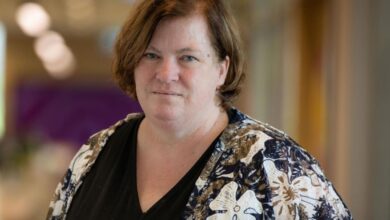Strength in a united profession
National registration and accreditation for nurses has been one the big changes over the past 15 years. By Rosemary Bryant.
As an avid reader of Nursing Review, I would like to acknowledge this 15th anniversary edition and recognise the work of its contributors over these years in delivering a current and comprehensive source of nursing news and information.
NR continues to cover key issues of the day affecting our profession while providing connections with collegiate and professional activities throughout the health sector. Its milestone edition presents an opportunity to reflect broadly on nursing over this time. In gauging how we are evolving as a professional group we should consider what opportunities and challenges lie ahead and how the future directions of nursing are being defined.
Over the past 15 years there has been significant development of the profession. Progressive change has seen the consolidation and advancement of nursing education within the higher education sector including the growth of master’s and doctoral programs.
As a profession we achieved authorisation of nurse practitioner roles; ardently engaged in the expansion of general practice nursing and pursued the further development of specialist nursing roles. Of great importance, increased capacity in nursing research has, more than ever, been influencing health service planning, service delivery and policy formulation at all levels.
In recent years, the Australian government’s health reform agenda has brought transformative changes creating new opportunities for growth and improvement. Comprehensive reforms included the July 2010 establishment of the National Registration and Accreditation Scheme.
Under the scheme we now have in place a national nursing and midwifery board which replaced eight jurisdictional boards – the Nursing and Midwifery Board of Australia (NMBA). For the first time we have an independent national accreditation body which conducts the accreditation process for nursing and midwifery programs leading to registration in one of the NMBA registration categories - the Australian Nursing and Midwifery Accreditation Council. With these bodies now operational we have a system with national capability to promote greater consistency in nursing education and practice across the country.
The importance of national registration and accreditation for the nursing profession cannot be overestimated, as pursuing it had been a professional priority for many years. In 1988, I chaired a meeting of the nursing boards of Australia when two significant professional decisions relating to national registration and accreditation were made. We agreed to advocate for national registration and accreditation as a paramount professional objective and decided to establish the Australian Nursing and Midwifery Council with the remit to develop national professional practice standards. Just over 20 years later a national scheme focused on public safety and greater health workforce mobility and sustainability became a landmark reform solidly backed by the nursing profession.
The national health reform agenda in recent years has placed great emphasis on primary health care and, consequently, is seeking to expand the role of nurses as part of a concerted effort to shift the focus of the health system from hospitals to primary health care. This shift has received strong endorsement from the profession, particularly the practical step of enabling nurse practitioners to provide publically funded private healthcare services.
November 1, 2010, is now a historic date for the nursing profession as it was the day new legislation enabling eligible nurse practitioners to gain access to the Medicare Benefits Schedule (MBS) and the Pharmaceutical Benefits Scheme (PBS) for their patients came into effect. This standout reform represented a major change in national health policy by supporting the growth of independent nursing roles in primary healthcare. By expanding options within the nursing career trajectory, I believe this move has had a revitalising effect on the profession and its impacts for workforce retention will be very positive.
Reflecting on the history of our profession over the past 15 years and more, my primary observation is that nursing has been its most persuasive and influential when we have been able to unite on issues and speak with a single professional voice. Over time, we have become acutely aware of the effectiveness of collective action in efforts to influence planning and policy decisions that impact on the nature and quality of health services both within and beyond the immediate domain of nursing. It is incumbent upon nursing leaders to work together to form shared visions to direct the future course of our profession and to effectively communicate our interests on broader health issues. Without shared vision we risk confusing policy and decision-makers which can undermine confidence in nursing advice.
In the now distant past our professional culture led the majority of nurses to adhere to accepted norms that often imposed unnecessary constraints on our professional scope of practice. The change in our educational pathways in the ’80s and ’90s has helped fortify our professional resolve and self-assurance supporting a willingness to challenge accepted norms. We now have a comprehensive understanding of our professional potential working as equals alongside our health colleagues.
The shift to where we are today has been a gradual one but the profession now more than ever understands that with the right educational and policy supports we can make a much greater contribution. While we are gaining professional confidence particularly in the clinical setting, we have some work to do to bolster our professional engagement at the planning and policy levels. In particular we need to increase our presence at the board level to better deliver policy development advocacy.
Nurses have realised that we are in a unique position to understand the health context from the service delivery setting to public policy formulation and implementation. A great challenge before us now is fulfilling the growing stakeholder demand for nursing input and leadership. We have fought hard for seats at decision-making tables, whether in the clinical or policy settings and we now need to demonstrate our professional bona fides. As part of this, we must nurture future leaders and foster confidence amongst those able but inexperienced in the planning and policy arena.
Strengthening leadership in nursing is vitally important so that we can meet our professional obligations to identify and lead positive change throughout the entire healthcare system. This will require an honest inward examination of how to support leadership development within nursing.
Looking to the future what can we hope for? I believe that as a result of national health reform initiatives as well as the resolve of the profession to strengthen our engagement in all areas of healthcare, professionally we are embarking on a period of remarkable change. In years to come, we can expect to advance our roles and independent practice across the breadth of the health system with particular growth within health promotion and preventative health, and in the management of chronic disease.
Of paramount importance, I believe we will see a larger, empowered and influential Aboriginal and Torres Strait Islander nursing workforce present and active across health settings, and across all geographic areas. It should be emphasised that participation by Aboriginal and Torres Strait Islander nurses in policy discourse and development is essential to ensuring this outcome and to fostering cultural safety and culturally sensitive health services. Overall, the potential of nurses will be maximised to improve access to health services by disadvantaged populations and rural and remote communities.
To ensure service sustainability within our healthcare systems, it is likely that models of collaborative practice will underpin healthcare delivery into the future. With a bachelor degree entry into practice, registered nurses have the educational foundations positioning us to participate in interprofessional education, a key enabler of collaborative practice. In line with international trends, the adoption of interprofessional education, learning and practice is slowly gaining momentum in Australia. As part of this, nurses will confidently take their place as equals in multidisciplinary teams that work collaboratively to ensure each professional is enabled to work to their full scope of practice utilising the full extent of their expertise to provide the community with the most appropriate, effective and efficient healthcare possible.
To conclude, it is my view that the future of nursing is bright as indeed it was when I began my career. Nursing has proven to be able to rise to any occasion and adapt to new challenges, technological change and evolving community expectations. I am sure Nursing Review will keep us informed of our professional challenges and achievements and I wish the staff well for their next 15 years.
Dr Rosemary Bryant is the Commonwealth Chief Nurse and Midwifery Officer.
Email: [email protected]





